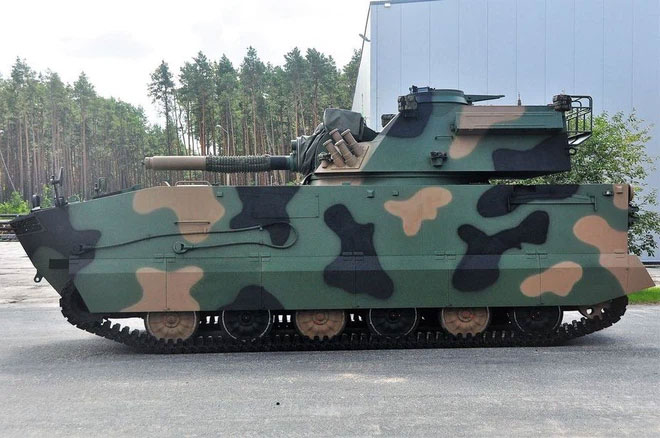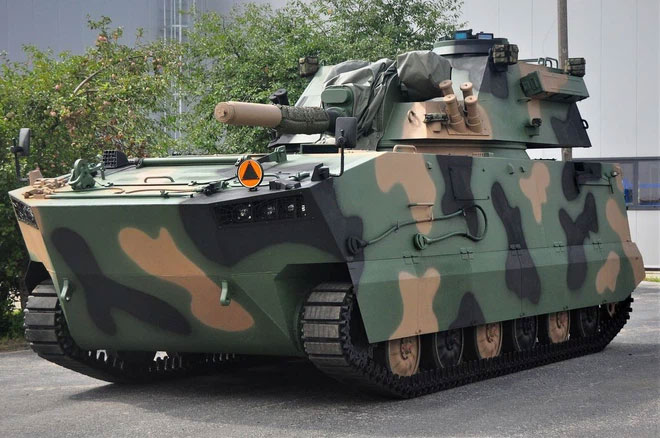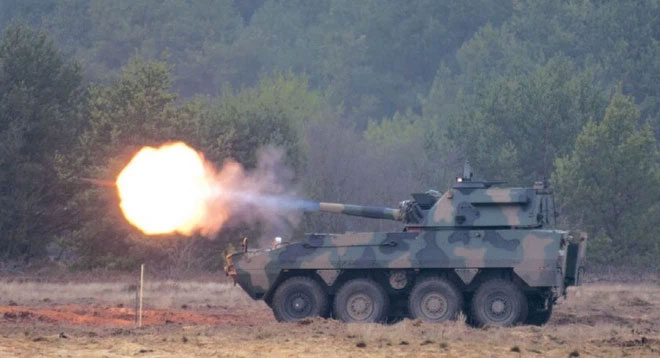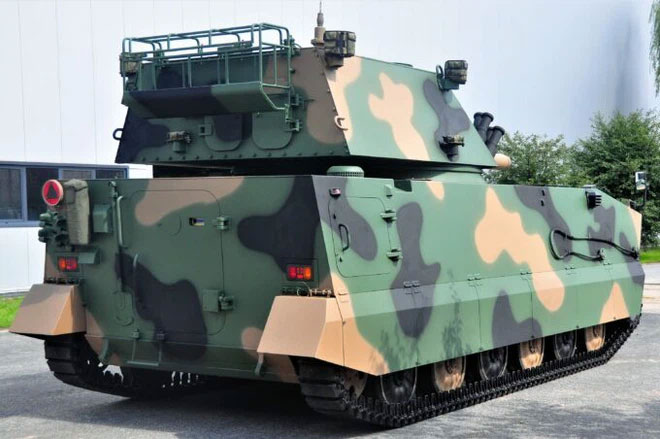According to developers, the new self-propelled mortar will be part of the modular artillery system design concept.
On September 6, milmag.pl reported that Poland continues to develop its own self-propelled artillery, and Huta Stalowa Wola showcased the new version of the Rak self-propelled mortar at the defense industry exhibition in Kielce (MSPO).


Tracked self-propelled mortar M120G Rak. (Photo: milmag.pl).
The new self-propelled mortar model is named M120G Rak and is built on a lightweight tracked chassis. Previously, Huta Stalowa Wola experimented with installing a mortar module on the chassis of the Gvozdika self-propelled howitzer, but in the final version, it was mounted on a modified chassis of the BMP Borsuk infantry fighting vehicle.
According to developers, the new machine is part of the modular artillery system design concept. If the Polish armed forces choose to adopt this variant of the self-propelled mortar, it will enhance equipment standardization, as Poland plans to create several other combat vehicles based on the promising BMP Borsuk.
BORSUK – Modern Infantry Fighting Vehicle (NBPWP BORSUK) | EN.
In the wheeled version, the Rak self-propelled mortar has a caliber of 120 mm and carries 46 rounds (20 rounds in the automatic loading system, 26 rounds in additional ammunition racks). The firing range with standard mortar shells is 7 km, but Poland is also developing a guided ammunition type that allows the range to extend up to 9 km.

The firing rate of the mortar is 6 – 8 rounds per minute.
With a crew of three, the Rak self-propelled mortar takes only 30 seconds to transition from travel mode to combat mode, and just 15 seconds to revert. The firing rate of the mortar is 6 – 8 rounds per minute.
120 mm self-propelled mortar RAK
It is anticipated that the BMP Borsuk will be an amphibious vehicle and will replace the outdated BWP-1 (BMP-1) currently in service with the Polish army. The vehicle utilizes a multi-fuel engine with an output of 800 horsepower for high mobility.

Borsuk will be produced in two versions: a “lightweight” amphibious BMP version weighing 25 tons, and a heavy attack version weighing around 30 tons.


















































